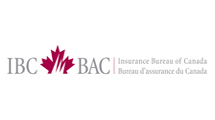
Conflict at Work – Fostering Healthy Workplaces

A diverse workplace can bring many benefits to a company or organization. Unless workplaces are managing diversity and inclusion through policy building, education and training, their initiative can lead to various challenges including conflicts that may require mediation.
Businesses and organizations have made great efforts recently to create diverse and inclusive workforces. Writers, including those from the Harvard Review, have emphasized the value diversity in a company[1]. That value includes greater diversity of perspectives, which creates more options and solutions for customers and service providers, higher levels of productivity, and an increase in the organization’s monetary value.
I am a strong advocate for promoting diversity in the workplace, particularly within the legal and mediation professions[2].
Although workplace diversity can foster a multitude of perspectives and ideas, it can also lead to unhappy environments, counterproductive outcomes, and conflicts.
Why?
Diversity of perspectives, processes and work ethics do not always align with the ‘norm.’ Diverse teams are frequently shaped by their cultural backgrounds, religious beliefs, and personal life experiences during their professional endeavors. Insufficient exposure to these diverse working styles, leadership approaches, and communication methods within companies and organizations can result in conflicts. Moreover, heightened productivity levels can potentially intensify competition among team members as well as racism, sexism and other forms of discrimination creating conflict.
To counter discrimination, many companies and organisations are now taking steps toward rudimentary Diversity, Equity and inclusion (DEI) training. Such efforts are basic and have minimal or no impact on altering the company’s culture and mindset, ultimately perpetuating the initial problem. Consequently, individuals from diverse backgrounds often depart with adverse effects on their mental well-being and reduced job satisfaction.
Recently, I mediated a dispute between two parties who struggled to find common ground on their projects. This discord resulted in delays and divisions among their colleagues, creating a hostile work environment. Despite efforts to defuse the situation, they sought help in openly discussing their grievances in a secure environment facilitated by a mediator. In addition to gender and racial discrimination, I identified that wider company-level issues contributed to the conflict. These were associated with the overall leadership style and insufficient employee support from the company from a DEI engagement perspective.
Unless workplaces build support and policies based on the protected grounds of the Canadian Human Rights Act, conflicts of this nature will continue to rise.
What can employers do to change company culture and become an inclusive workplace?
Here are some options:
- Make DEI a commitment. A commitment requires listening to the needs of the employees at the company and generating barrier free workplace policies for long term support. This will eventually help change company culture.
- Investment in training. Continuous and consistent training can lead to better understanding. A trainer is needed who can work with groups and individuals to help employees and leadership understand the impact of discrimination and cultural differences. This training requires activities and theoretical education all year round to help absorb the information and change employee habits to support culture change. For example, most people will say they ‘tolerate’ differences and do not discriminate against anyone based on their skin colour, because they do not see it (known as being “colour blind”). The problem with colour blindness is that the racialized person will also bring a set of cultural values, beliefs, behaviours and attitudes that could go unnoticed or disrespected. Colour blindness may not pose a problem for brief one-off interactions outside the workplace. But in close working proximity the trajectory could create reprehensible damage. In my view and from personal experience, it becomes harder to see past someone’s skin colour when the cultural dynamics interfere with what is considered ‘normal’, which ultimately leads to creating discriminatory behaviour and barriers.
In a recent DEI training, I used an example of a White person going on a vacation with a practicing Muslim friend. Despite being friends and never encountering discrimination, going on vacation may require more accommodations for the Muslim friend. For example, the friends may not enjoy the same restaurants due to the lack of halal options. They may not share a room due to early morning commitments to prayer. Honouring prayer times may interfere with day trips and excursions[3].
Without a deep understanding of worldviews and cultural differences, personal and work relationships can easily run into conflicts.
Thus, it is crucial for companies to seek training that provides a deep dive into cultural dynamics and offers effective intercultural communication skills.
- Set up communication forums. Communication forums are a great way to understand different cultures in the office. They are great ways to build inclusion. Communication forums are a step toward managers and employees having a safe environment to talk to each other about themselves and their work. People have an opportunity to speak with full transparency and understanding about work ethics and decision-making processes. Communication forums can build better work relationships and commitment to the work itself.
What can employees do when facing conflict at work
When working relationships lack mutual understanding, conflicts can prove highly destructive and lead to destructive outcomes. As a mediator, I see the destruction too often and create tools for parties to help them avoid future conflicts. Each tool is designed based on listening to their unique conflicts and circumstances.
One of the main areas of concern in my mediations is inadequate communication.
When facing a conflict at work, parties can attempt a resolution by:
- Reaching out to the other person and acknowledging the conflict;
- Inquiring if they are willing to set aside time to discuss the issues causing the conflict;
- Listening to each other respectfully and empathetically during the meeting to understand different perspectives;
- Exploring each other’s interests in resolving the conflict and seeking mutually agreeable solutions; and
- Focusing on moving forward by building sustainable options and leaving the past behind.
Dealing with conflicts in such situations can be challenging, particularly when emotions are running high and parties feel threatened. If the conflict becomes overwhelming, speak to HR personnel and request a facilitated conversation with an experienced mediator. Mediation may be the next best option before a formal complaint or quitting. Mediation can empower employees to actively participate in resolving the issues with successful outcomes, potentially leading to transformative results.
[1] Harvard Review: How and Where Diversity Drives Financial Performance, by Rocio Lorenzo and Martin Reeves, January 30, 2018.
[2] I co-chaired a report released by the Ontario Bar Association in April 2022, Neutral Diversity in Ontario, that highlighted the lack of diversity in the mediation profession and how to increase it. www.oba.org/adr
[3] Muslims who practice the faith, pray 5 time a day: Dawn, lunch, afternoon, evening and night.
Afsana Gibson-Chowdhury is a lawyer, Adjudicator and Mediator, and founded ‘Gibson Chowdhury,’ a Toronto-based mediation boutique, specializing in workplace discrimination, civil and commercial disputes. She is an Equity Diversity and Inclusion and intercultural communications trainer and educator.












